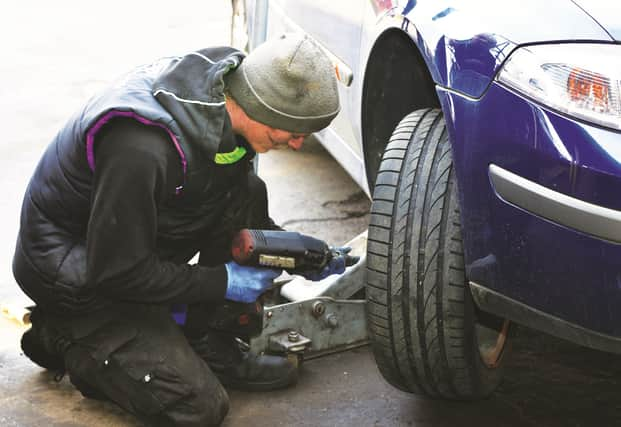MOTORING: Tyre safety is vital for good driving


Tyre treads are designed to give good grip on wet roads but this generally decreases as a tyre’s tread pattern wears down or as the depth of water increases.
Drivers should take this into consideration and reduce their speed accordingly in wet conditions.
Advertisement
Hide AdAdvertisement
Hide AdThe legal minimum tread depth for cars in the UK is 1.6mm throughout a continuous band comprising the central three-quarters of breadth of the tread and around its entire outer circumference.
In wet weather tyre tread grooves help to remove water from the contact patch between your tyres and the road surface meaning your car can brake, steer and accelerate properly.
Without adequate tread depth your tyres may not be able to perform properly in wet conditions, reducing your safety on the road. It is therefore advisable to consider replacing your tyres well before they reach the legal minimum.
Furthermore, drivers whose tyres fail to comply with the minimum tread depth requirements risk a fine of up to £2,500 and three penalty points for each illegal tyre.
Advertisement
Hide AdAdvertisement
Hide AdA quick and easy way to see if your tyre tread exceeds the minimum legal tread depth is to take the 20p test.
Simply place a 20p coin into the main tread grooves of your tyre. If the outer band of the 20p coin is obscured when it is inserted, then your tread is above the legal limit.
If the outer band of the coin is visible, then your tyres may be illegal and unsafe and should be checked immediately by a qualified tyre professional.
When taking the test, remember to check at least three locations around each tyre. As the test is so quick and easy, stay safe by checking your tyres at least once a month.
Advertisement
Hide AdAdvertisement
Hide AdIn situations when your tyres have insufficient tread depth to clear the water properly from the road surface, you may experience the particularly hazardous phenomenon of aquaplaning.
During aquaplaning, your tyres lose contact with the road surface and travel on top of the water’s surface. With no contact with the road, you are unable to accelerate, brake or steer effectively, greatly increasing your risk of being involved in an accident.
To reduce your risk of aquaplaning, check your tyre tread depth regularly.